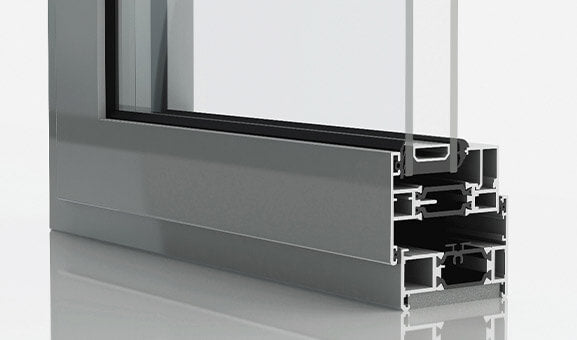
Why do my aluminium doors feel cold?

If you have recently installed aluminium doors in your home, you may have noticed that they feel colder to the touch than other materials. This can be surprising and uncomfortable, especially during the colder months. But why do aluminium doors feel cold, and is there anything you can do about it?
Thermal Conductivity
One of the main reasons why aluminium doors feel cold is due to their high thermal conductivity. This means that they are very good at transferring heat, which can result in a significant temperature difference between the inside and outside of the door. In contrast, other materials like wood or uPVC have lower thermal conductivity, meaning they are less efficient at transferring heat.
Thermal conductivity is measured by the rate at which heat flows through a material. Aluminium has a thermal conductivity of around 237 W/mK, which is much higher than uPVC at 0.17 W/mK or timber at 0.13 W/mK. This means that aluminium doors are highly conductive and can quickly transfer heat from your home to the outside environment, resulting in a cold surface temperature.
Weather Stripping
Another factor that can contribute to the cold feeling of aluminium doors is the lack of effective weather stripping. Weather stripping is a seal around the door that helps to prevent drafts and air leakage. When weather stripping is not installed or is improperly installed, cold air can enter your home through gaps around the door, making it feel even colder.
Weather stripping can deteriorate over time, especially with exposure to the elements. It's important to regularly check and replace weather stripping to ensure it is providing an effective barrier against the cold. Weather stripping comes in a variety of materials, including foam, rubber, and silicone, so choose the one that best suits your needs and budget.
Double Glazing
If your aluminium doors are single glazed, this can also contribute to the cold feeling. Single glazed doors have only one layer of glass, which provides little insulation. Double glazing, on the other hand, consists of two layers of glass with a gap in between that helps to trap heat and prevent heat loss. Upgrading to double glazing can significantly improve the insulation and overall warmth of your aluminium doors.
Double glazing is a popular choice for many homeowners, as it offers a range of benefits beyond increased insulation. It can also help to reduce outside noise, improve security, and enhance the overall appearance of your home. Double glazing is available in a variety of styles, from traditional to modern, so you can choose the one that best complements your home's aesthetic.
Insulated Frame
Finally, it is important to ensure that your aluminium doors have an insulated frame. Insulated frames can help to reduce heat transfer and prevent cold spots on the surface of the door. Look for doors that have a thermal break in the frame, which is a material that helps to separate the inside and outside of the door, reducing heat loss and increasing energy efficiency.
Aluminium frames are often preferred over other materials, such as uPVC or timber, due to their durability and low maintenance. However, without proper insulation, aluminium frames can contribute to the cold feeling of the door. Adding an insulated frame or ensuring that your existing frame has a thermal break can greatly improve the energy efficiency and overall warmth of your aluminium doors.
Conclusion
If you are experiencing a cold feeling from your aluminium doors, there are several factors that could be contributing to the issue. High thermal conductivity, lack of effective weather stripping, single glazing, and uninsulated frames can all make your aluminium doors feel cold. Consider upgrading to double glazing and ensuring that your doors have proper weather stripping and insulated frames. With these improvements, you can enjoy the benefits of aluminium doors without the discomfort of feeling cold.


